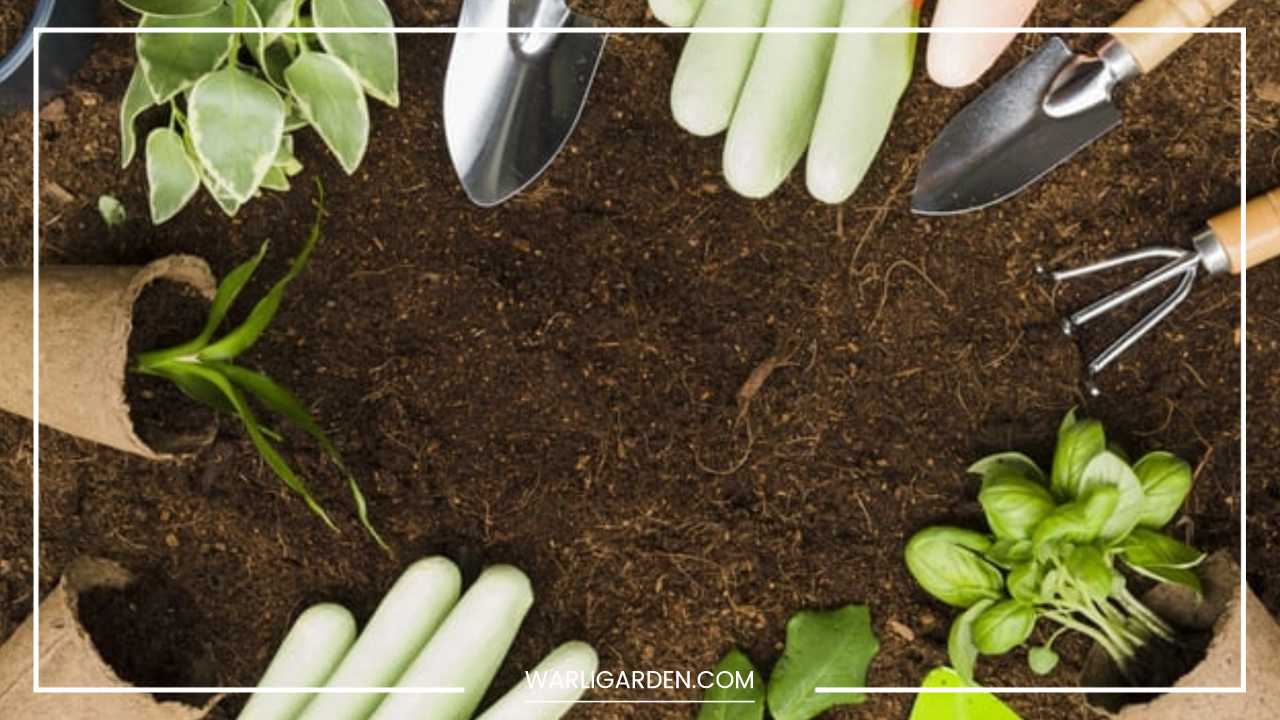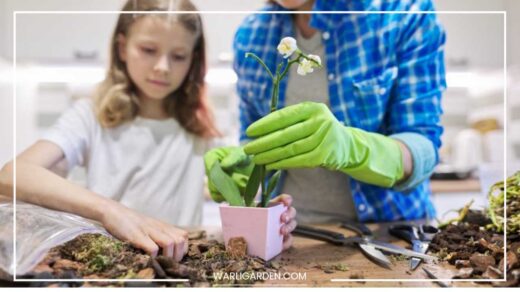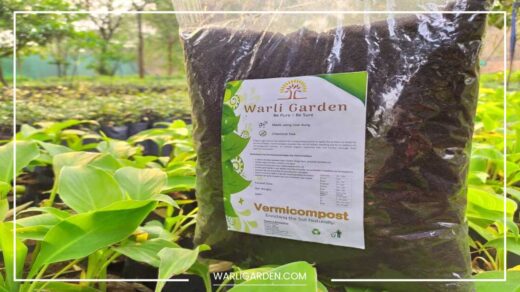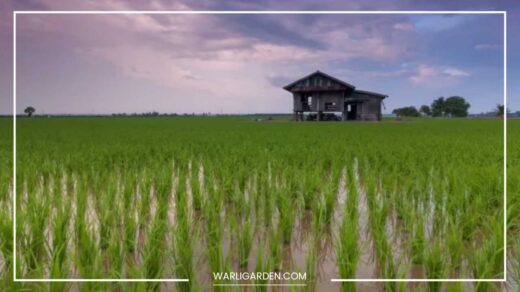What is Potting Mixture?

Potting Mixture
What is Potting Mix? The Secret Weapon of Container Gardeners
For anyone who’s ever dreamt of a flourishing indoor jungle or a vibrant balcony oasis, understanding potting mix is the key. It’s the foundation for thriving plant life in containers, providing the crucial support system for roots to establish and flourish.
But unlike its name suggests, potting mix isn’t just a generic term for dirt. It’s a meticulously crafted blend of ingredients designed to mimic the natural environment that nourishes plants outdoors.
This comprehensive guide delves into the world of potting mixes, exploring:
- The Key Ingredients: Unveiling the components that make up a good potting mix.
- Understanding the Roles: Dissecting how each ingredient contributes to healthy plant growth.
- Choosing the Right Mix: Equipping you with the knowledge to select the perfect mix for your specific plants.
- Creating Your Own Mix (Optional): A detailed guide for the adventurous gardener who wants to craft a personalized blend.
- Beyond the Basics: Exploring specialty mixes, troubleshooting common potting mix issues, and understanding organic vs. non-organic options.
The Building Blocks of a Potting Mix: A Deeper Dive
A high-quality potting mix is an intricate ecosystem of various components, each playing a vital role in plant health. Let’s meet the key players and explore their properties in more detail:
- Peat Moss: This spongy, brown material is a decomposed form of moss. It boasts excellent moisture retention, a crucial property for container plants that dry out faster than those in the ground. However, peat moss is a non-renewable resource, and its harvesting can raise environmental concerns.
- Compost: Rich in organic matter and nutrients, compost provides essential food for plants and improves soil structure. Look for aged or composted materials like bark, leaves, or manure. Different types of compost offer varying nutrient profiles, so research the specific type used in your mix or choose a compost tailored to your plants’ needs.
- Perlite: These tiny white volcanic rock particles are lightweight and enhance drainage and aeration. Air circulation around the roots is vital for healthy growth and prevents rot. However, perlite offers minimal nutrient value.
- Vermiculite: Similar to perlite, vermiculite is a lightweight, heat-treated mineral that improves drainage and aeration. It can also hold some moisture, making it a more versatile component. However, vermiculite can break down over time, losing its effectiveness.
- Coir: Made from the husks of coconuts, coir offers excellent drainage and aeration while retaining some moisture. It’s a sustainable and eco-friendly alternative to peat moss. Coir can also be buffered to adjust its pH level, making it suitable for a wider range of plants.
- Bark: Pieces of bark, like pine bark, can be added to potting mixes for orchids and other plants that thrive in well-draining conditions. Bark provides air circulation and helps the mix retain its structure over time. Different types of bark offer varying drainage properties, so choose based on your plants’ needs. For example, orchid bark offers superior drainage compared to pine bark.
- Sand: While not as common in modern mixes due to its limited water retention, sand can be used in small quantities to improve drainage in some situations, particularly for cacti and succulents. However, be cautious, as too much sand can hinder water retention and create a loose, unstable mix.
- Biochar: This charcoal-like material is derived from organic matter burned under limited oxygen. Biochar offers several benefits, including improved water and nutrient retention, increased soil aeration, and potential benefits for soil health by promoting beneficial microbes.
- Dolomite Lime: This calcium and magnesium-rich mineral helps to regulate soil pH and is often added to potting mixes that may become acidic over time. This is particularly important for plants that prefer slightly alkaline soil conditions.
The Symphony of Ingredients: How They Work Together in Harmony
Each ingredient in a potting mix plays a specific role in creating an optimal environment for plant roots. Here’s a closer look at their contributions and how they work together:
- Moisture Retention: Peat moss, coir, and to a lesser extent, vermiculite are the stars of the show when it comes to holding onto water. This is especially important for plants that enjoy consistently moist soil, like ferns and peace lilies. However, it’s crucial to find a balance between moisture retention and drainage to avoid waterlogging.
- Drainage and Aeration: Perlite, vermiculite, and bark are the air traffic controllers, ensuring proper air circulation around the roots. This prevents water from pooling around the roots, which can lead to rot. The size and type of drainage holes in your container also play a role in drainage.
- Nutrients: Compost is the resident chef, providing essential macro and micronutrients for healthy plant growth. However, the nutrient content of compost can vary depending on the source materials. Some potting mixes may also contain slow-release fertilizers for an extra boost. The amount and type of fertilizer will depend on the specific needs of the plants the mix is intended for.
- Structure and Weight: Bark, biochar, and other organic materials like compost help the mix retain its structure and prevent it from becoming compacted over time. This allows for proper drainage and root growth. Lightweight ingredients like perlite and vermiculite keep the mix from becoming too heavy for container plants, especially important for hanging baskets or plants on shelves.
Choosing the Perfect Potting Mix for Your Plant’s Needs
With a diverse range of potting mixes available, selecting the right one can feel overwhelming. Here are some key considerations to guide you:
- Plant Needs: Different plants have different moisture and drainage requirements. Cacti and succulents, for example, thrive in mixes with excellent drainage, often containing a higher proportion of perlite and sand. Conversely, ferns and peace lilies prefer consistently moist soil and benefit from a mix that retains more moisture, like one containing a higher proportion of peat moss or coir. Research the specific needs of your plants before choosing a mix.
- Pot Material: Clay pots breathe more than plastic pots, so a mix with slightly better drainage may be needed for clay pots to prevent waterlogging. Plastic pots tend to retain moisture more, so a mix that holds moisture a little better may be suitable.
- Indoor vs. Outdoor: Outdoor containers exposed to elements may require a mix with faster drainage to avoid excessive moisture retention during rain. Conversely, indoor plants with limited airflow may benefit from a mix that retains moisture a little better to prevent drying out too quickly.
- Organic vs. Non-Organic: Organic potting mixes are made with natural ingredients like compost, peat moss (responsibly sourced), and coir. They offer environmental benefits and promote healthy soil biology. Non-organic mixes may contain synthetic ingredients like perlite, vermiculite, and fertilizers. They can be lighter weight and more consistent, but may lack the long-term benefits of organic ingredients.
Creating Your Own Potting Mix: A Recipe for the Adventurous Gardener
For those who enjoy a hands-on approach, creating your own potting mix can be a rewarding experience. Here’s a basic recipe to get you started, with variations based on plant needs:
Basic Potting Mix Recipe:
- 2 parts peat moss (responsibly sourced) or coir
- 1 part perlite or vermiculite
- 1 part compost
Optional Ingredients:
- For cacti and succulents: Add a small amount of sand (up to 1/2 part) for extra drainage.
- For moisture-loving plants: Increase the coir or peat moss content to 3 parts.
- For plants that prefer slightly alkaline soil: Add a small amount of dolomitic lime (follow package instructions).
- For a slow-release fertilizer boost: Mix in a controlled-release fertilizer according to the manufacturer’s recommendations.
Remember: When creating your own mix, ensure all ingredients are pathogen-free to avoid introducing diseases to your plants. It’s also important to consider the environmental impact of your choices. Opt for responsibly sourced peat moss and use organic ingredients whenever possible.
Beyond the Basics: Specialty Mixes and Troubleshooting
- Specialty Mixes: Many potting mix companies offer mixes tailored to specific plant types, such as cacti and succulents, orchids, African violets, or vegetables. These mixes often contain a specific blend of ingredients optimized for the unique needs of those plants.
- Troubleshooting Common Potting Mix Issues:
- Drainage Problems: If water pools on top of the soil or runs straight through without soaking in, your mix may not be draining properly. Consider repotting with a mix that has better drainage or adding more perlite or bark to your existing mix.
- Compacted Soil: Over time, potting mix can become compacted, hindering drainage and aeration. Repotting with fresh mix is the best solution. You can also try loosening the top layer of the soil with a fork to improve air circulation.
- Nutrient Deficiency: If your plants show signs of nutrient deficiency, such as yellowing leaves or stunted growth, you may need to fertilize them. Choose a fertilizer suitable for the type of plant and follow the application instructions carefully.
Mastering the Art of Potting Mix
Understanding potting mix is a fundamental skill for any container gardener. By appreciating the roles of each ingredient and selecting the right mix for your specific plants, you can create a thriving environment that fosters healthy growth and vibrant foliage.
Remember, a little experimentation and research will go a long way in helping you become a potting mix master! Here are some additional points to consider:
-
The Importance of pH: While most potting mixes are formulated for a neutral pH range (around 6.0-7.0), some plants thrive in slightly acidic or alkaline soil. For example, azaleas and blueberries prefer acidic soil, while cacti and citrus prefer slightly alkaline conditions. If you’re growing plants with specific pH needs, you may need to adjust the pH of your potting mix. You can purchase pH testing kits to measure the pH of your mix and adjust it accordingly with amendments like lime (raises pH) or sulfur (lowers pH).
-
The Benefits of Mycorrhizae: Mycorrhizae are beneficial fungi that form a symbiotic relationship with plant roots. They help plants absorb water and nutrients more efficiently and can improve plant health and stress tolerance. Some potting mixes come pre-inoculated with mycorrhizae, or you can purchase it separately and add it to your mix.
-
The Ongoing Care of Your Potting Mix: Over time, potting mix can break down, lose nutrients, and become compacted. To maintain healthy plant growth, it’s recommended to repot your plants with fresh potting mix every 1-2 years. You can also refresh the top layer of the soil (about an inch) with fresh mix every few months to improve drainage and add a boost of nutrients.
-
Sustainable Practices: When choosing and using potting mix, consider these sustainable practices:
- Responsibly Sourced Peat Moss: Opt for peat moss harvested from bogs undergoing regeneration efforts. Coir is a more sustainable alternative to peat moss.
- Reusing Potting Mix: If your plants are healthy, you can reuse some of the old potting mix when repotting. Discard any diseased soil and refresh the mix with new ingredients.
- Composting: Food scraps, yard waste, and even some used coffee grounds can be composted and turned into nutrient-rich compost for your potting mix.
By understanding the intricacies of potting mix and adopting sustainable practices, you can create a thriving container garden that benefits both your plants and the environment. Happy planting!


